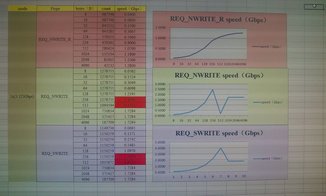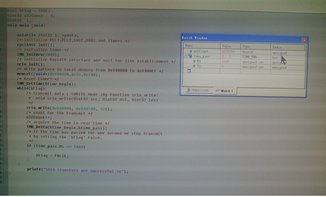hello, I'm testing SRIO direct IO on 6455,my platform is an cPCI board which has two 6455 DSP ,and
the two dsp connect with each other by SRIO, and I am testing the direct I/O using the srio example under the dsk6455 example
,the srio is configured as follow:
>>one dsp configured as master, and the other is slave
>>both dsp are configured as 1x
>>both dsp configured as 3.125Gbps
>>the data is transfer from master to slave by NWRITE,NWRITE_R and SWRITE
and I have verified that the data has correctly transfered to the slave from master, now I changed the code to test the speed
of the srio based the example code,and here is my test result,

here is part of my test code , and I'm using timer1 on master to measure the speed ,

I think there is something error in my test ,but I'm not sure
,and I have some questions follow:
first, am I right that I test the direct IO speed in this method?
second, is there any difference(mainly the speed difference) between NREAD,NWRITE,NWRITE_R and SWRITE?
thirdly, if my method is wrong, could you give me some advice to test the speed of SRIO.
thank you very much ,waitting for your answer!

